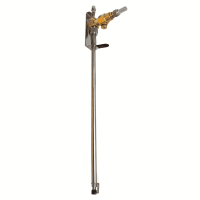Hello guys,
I am usually making 5 gallon ale batches, I do not keg and I don't have a fermentation chamber - both are due the lack of space. I am planning to make a SS fermenter and I could ferment under pressure. My plan is to do that because (in theory) I could ferment at higher temperatures(room temperature ~25 C in the summer) that required without off flavors. This is the only reason! So my questions is: how to bottle condition a beer that had been fermenting under pressure?
1)calculate the level of the CO2 that is present in the beer and adjust the priming sugar quantity
2)after the fermentation is down, release the pressure, wait for a couples of days so that the beer loose the extra carbonation and then use the usual amount of priming sugar - if that method works, it might be the safest one
Thank you !
I am usually making 5 gallon ale batches, I do not keg and I don't have a fermentation chamber - both are due the lack of space. I am planning to make a SS fermenter and I could ferment under pressure. My plan is to do that because (in theory) I could ferment at higher temperatures(room temperature ~25 C in the summer) that required without off flavors. This is the only reason! So my questions is: how to bottle condition a beer that had been fermenting under pressure?
1)calculate the level of the CO2 that is present in the beer and adjust the priming sugar quantity
2)after the fermentation is down, release the pressure, wait for a couples of days so that the beer loose the extra carbonation and then use the usual amount of priming sugar - if that method works, it might be the safest one
Thank you !




